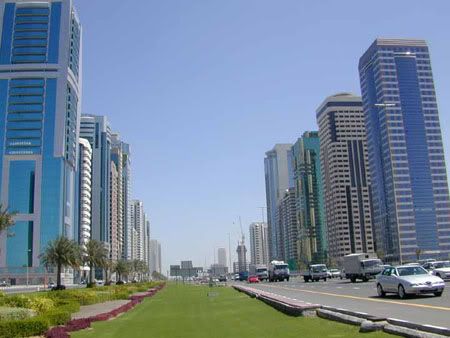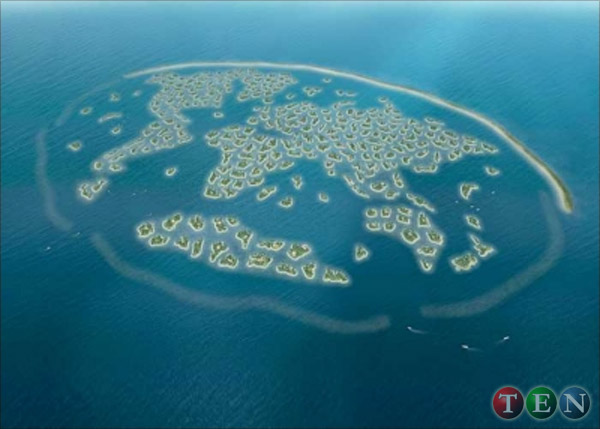 Dubai_skyline photo
Dubai_skyline photo Dubai_skyline photo
Dubai_skyline photo Dubai_skyline photo
Dubai_skyline photo Dubai_skyline photo
Dubai_skyline photo Dubai_skyline photo
Dubai_skyline photo Dubai_skyline photo
Dubai_skyline photo Dubai_skyline photo
Dubai_skyline photo Dubai_skyline photo
Dubai_skyline photo Dubai_skyline photo
Dubai_skyline photo Dubai_skyline photo
Dubai_skyline photo
 Because of the competition, it wasn't until the building officially opened in January, 2010 that the public learned its actual height: 2,717 feet. There had been rumors for years that the design kept getting tweaked taller as rival buildings with taller heights were announced. But you get to a point where you have to eventually stop building, and for The Burj Khalifa, that point is at 828 meters.
Because of the competition, it wasn't until the building officially opened in January, 2010 that the public learned its actual height: 2,717 feet. There had been rumors for years that the design kept getting tweaked taller as rival buildings with taller heights were announced. But you get to a point where you have to eventually stop building, and for The Burj Khalifa, that point is at 828 meters.
- Architect: Adrian Smith
- Developer: Emaar Properties
- The foundation is made up of 192 concrete and steel pilings more than 164 feet (50 meters) deep. They are joined by a 12-foot-thick raft upon which the skyscraper rests.
- 45,000 cubic meters of concrete was used in the foundation.
- The hotel in the Burj Dubai is going to be an Armani-branded hotel. In keeping with Islamic custom it will have separate hours for women and men at the pool.
- The footprint of this building is in the shape of a hymenocallis, a desert flower native to the area.
- According to an interview in Construction Week, the air conditioning chillers installed on the 155th and 159th floor are so high that their design had to take into account the thinner air at that elevation.
- This building has about 30 setbacks.
- Underground parking spaces: 16,000
- January, 2004: Construction began.
- September 20, 2004: The first concrete was poured for the foundation.
- June 26, 2005: Gulf News reported that the estimated total cost for the Burj Dubai complex rose to US$5,500,000,000.
- July 16, 2005: Construction Week magazine reported that the designers of the Burj Dubai were reconsidering their decision to use stainless steel on the exterior of the tower because prices jumped from US$400 a ton to $2,200 in just two years.
- March 23, 2006: The Associated Press reported that 2,500 construction workers rioted because of low pay and poor treatment, doing an estimated US$1,000,000 in damage. Thousands of construction workers at other Dubai projects also went on a sympathy strike.
- April 16, 2006: AME Info reported that the Burj Dubai was going to be at least 200 stories tall, a number that turned out to be false.
- September 1, 2006: Construction reached 70 stories.
- October 1, 2006: Construction reached 75 stories.
- October 31, 2006: Construction reached 80 stores and 850 feet / 259 meters. That height made it taller than the tallest building in Europe.
- November 11, 2006: ITPBusiness reported that construction was being delayed by a shortage of exterior cladding material.
- April 6, 2007: The tower reached a record-breaking 120 stories.
- July 21, 2007: This building passes Taipei 101 as the tallest building on Earth.
- August 12, 2007: Passed 1,730 feet in height -- higher than the antennae atop the former Sears Tower in Chicago.
- August 29, 2007: Passed the CN Tower in Toronto to become the world's tallest free-standing structure.
- September 3, 2007: Passed 1,772 feet in height -- higher than the Ostankino Tower in Moscow.
- May, 2008: This building passes the KVLY Television tower in North Dakota to become the tallest man-made object on Earth.
- May 20, 2008: A worker is crushed to death by an exterior panel.
- May 24, 2008: A British man parachuted off of the Burj Dubai just days after it rose to a height making it the tallest man-made structure ever built. He managed to sneak past security guards and walk up more than 150 stories of stairs with all of his gear without being noticed.
- June 17, 2008: Arabian Business reported that the height of this building was increased by planners, but remains secret.
- October, 2008: This building reached 2,257 feet, making it taller than the demolished Warsaw Radio tower in Poland, formerly the tallest man-made structure ever to exist.
- December, 2008: The spire was erected at the top of this building, giving it its full height.
- December 30, 2008: Original scheduled completion date.
- January 17, 2009: Building topps out at 2,684 feet.
- July 12, 2009: Zawya reports that the opening of this building will be delayed three months until December 2, 2009.
- November, 2009: The opening date was pushed back to January 4, 2010.
- January 4, 2010: The building opened to the public.
- January 4, 2010: This building was renamed Burj Khalifa Bin Zayed.
- January 4, 2010: The building's official height was revealed: 2,717 feet / 828 meters.
 Burj Khalifa,
Burj Khalifa, Burj Khalifa,
Burj Khalifa, Burj Khalifa,
Burj Khalifa, Burj Khalifa,
Burj Khalifa, Dubai,
Dubai, Dubai,
Dubai, Dubai,
Dubai, Dubai,
Dubai,
However recently Dubai Property giant Nakheel has been attracting the wrong kind of attention with its announcement of it’s intent to lay off 500 workers. This follows hot on the heals of the news that work on the Palm Jebel Ali, The Dubai Waterfront and the Palm Deria are to be ‘slowed’, as is work on the Trump Tower at the Palm Jumeirah. Nakheel believes slowing the rate of building on these long dated projects will allow for it to effectively combat the present economic problems, and will allow for the more intensive work to be carried out at a time when there is less of a liquidity problem.
Dubai Sports City, located in the vast Dubailand, continues to progress. Infrastructure here is well underway, and with the inauguration of the Els golf club already having taken place earlier this year, things are looking positive for the world’s first integrated sports city. With the fifth and final building release at Canal Residence West, the Mediterranean styled development is now all up for grabs, and if the final building at the project proves as popular as the other four, then apartments here won’t hang around for long, whatever the financial environment. Sports City has certainly been a resounding success, and has rarely been out of the news.
There is a lot going on here and with stars from a wide variety of sports recently giving the project the thumbs up, it looks to remain one of Dubai properties most sought after areas. A number of buildings are already well underway here, so it should not be too long before the freehold property here starts to take shape. Nothing on the scale of Dubai Sports City has ever been attempted before but the combination of property, sports academies and golf courses really seems to have hit the spot with buyers.
So that is most of the current goings on in the Dubai freehold property market. So whilst things are not as bright as they once were, life in the property world still goes on. With things changing so quickly here, we will be sure to update you again in a month or two.
 | ||
| Boarding long-tail boats from Thailand's Ko Phi Phi Le, near Phuket | ||
